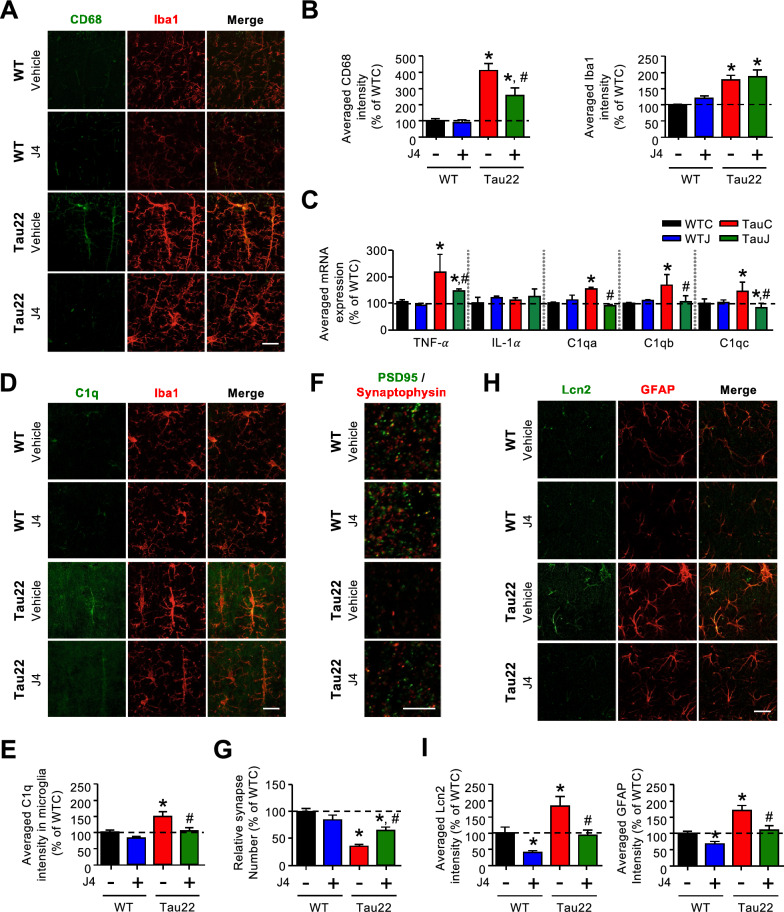Fig. 5.
Chronic J4 treatment suppresses the activation of microglia and the induction of cytotoxic A1 astrocytes in the hippocampi of Tau22 mice. Mice were treated as indicated (WTC, black; WTJ, blue; TauC, red; TauJ, green; n = 5–7 in each group) from the age of 3–11 months, and their tissues were subjected to IHC staining and RT-qPCR analysis. a CD68 (green) is a marker of reactive microglia and Iba1 (red) is a marker of microglia and the quantification results are shown in (b). c Gene expression of TNF-α, IL-1α, and C1q (C1qa, C1qb, and C1qc) in the hippocampi of treated mice (n = 6–9 in each group) was analyzed, and GAPDH was used as a reference gene. d The intensity of C1q (green) and Iba1 (red) expression was examined and the quantification results are shown in (e). Scale bar, 20 μm. f, g The number of synapses (f) in the hippocampi of treated mice (n = 10–12 in each group) was evaluated by staining with the indicated antibodies (PSD95, green; SYP, red). The quantification results are shown in (g). Scale bar, 5 μm. h Hippocampal sections (20 μm) were prepared and subjected to IHC staining (Lcn2 a marker of reactive astrocytes, green; GFAP a marker of astrocytes, red) and the staining was quantified (i). Scale bar, 20 μm. The data are expressed as the mean ± S.E.M. *p < 0.05 versus the WTC group; #p < 0.05 versus the TauC group, one-way ANOVA

